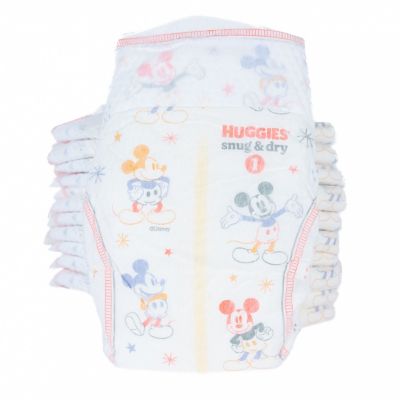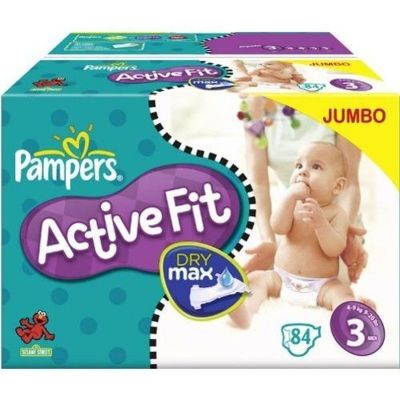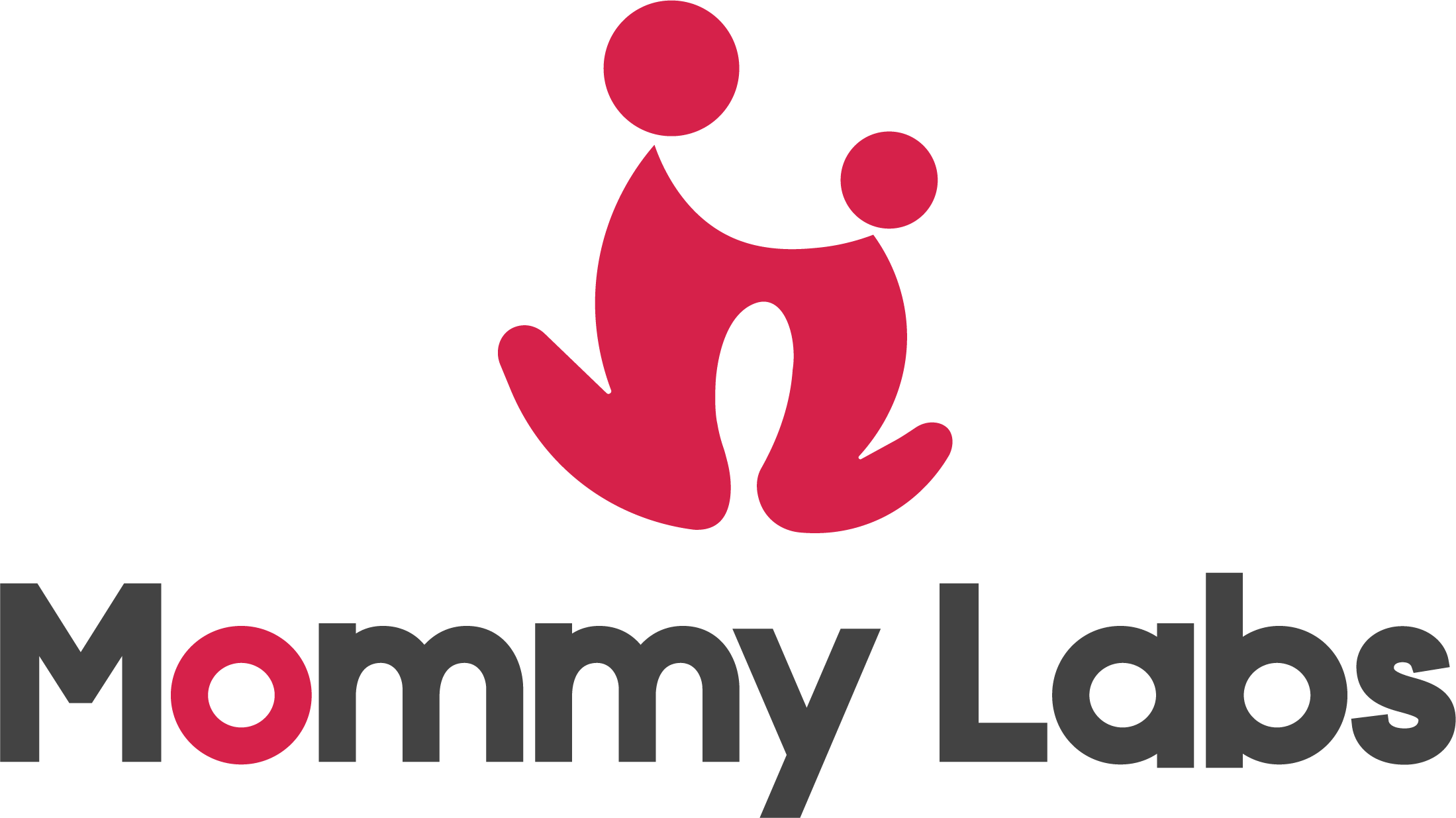In the current era of baby diapering, the choice of diapers has become a topic of paramount importance, not just for parents but also for healthcare professionals. The diapers your child wears can significantly impact their health and comfort. Hospitals and pediatricians now emphasize the importance of selecting the right diaper to ensure the well-being of your little one. With an overwhelming array of options available, ranging from brands, sizes, and features, parents must navigate this sea of choices and make informed decisions.
Before you choose the perfect diaper for your child, several considerations come into play. You need to take into account any allergies or sensitivities your baby might have, the type of skin they possess, and what will best suit their individual needs. The two giants in the world of diapers, Huggies and Pampers, have garnered immense popularity, and parents often find themselves pondering over which one to choose. In this blog post, we’ll explain the Huggies vs. Pampers debate, exploring various factors that will help you make the right choice for your precious bundle of joy.
Huggies vs. Pampers – A Diaper Brand Showdown
| Aspect | Huggies | Pampers |
| Sizes | Preemies through size 6 | Preemies through to size 7 |
| Sizing tabs available to let you know when to size up | Sizing tabs available to let you know when to size up | |
| Features | – Wetness indicator | – Wetness indicators |
| – Tabs | – Tabs | |
| – Stretch material | – Stretch material | |
| – Dry Touch liner | – 0% chlorine bleaching | |
| – Pocketed waist back | – 0% latex, parabens | |
| – Paraben-free | ||
| Fit | Snug, stays on when baby moves | Snug, stays on when baby moves |
| Availability | Costco, Amazon, Target, Walmart, Rite Aid, CVS, | Amazon, Target, Walmart, Buy Buy Baby, |
| Walgreens, Shoppers Drug Mart | Bed Bath & Beyond, Rite Aid, CVS, | |
| Walgreens, Shoppers Drug Mart | ||
| Product Range | – Little Snugglers (newborns) | – Swaddlers, Baby Dry (newborns) |
| – Little Movers (older infants/toddlers) | – Cruisers, Baby Dry (older infants/toddlers) | |
| – Snug & Dry (leak lock) | – Easy Up (training pants) | |
| – Overnites (overnight diapers) | – Underjams (bedwetting) | |
| – Pull Ups (training pants) | – Based on size, choose from different prints | |
| – Goodnites (bedwetting) | designed to follow your baby’s cognitive development | |
| Company Details | – 1st appearance in 1978 | – 1st appearance in 1961 |
| – Owned by Kimberly-Clark | – Owned by Procter & Gamble | |
| The Good | – Huggies Rewards program: earn points for gift cards, | – Pampers Rewards program: earn points purchasing |
| Huggies products, toys from Melissa & Doug | Pampers branded products and redeem for toys, | |
| – No Baby Unhugged program: provide diapers and wipes | products, and experiences on their app | |
| to families in need | – Pampers UNICEF partnership: providing Tetanus shots | |
| to newborns in developing countries | ||
| – Plastic-free | ||
| – No parabens, latex, or fragrances | ||
| – Committed to the environment and reducing waste | ||
| caused by diapers | ||
| – Green packaging |
Diaper Quality and Performance In Huggies And Pampers- Your Baby’s Comfort
When it comes to diaper quality and performance, we want the best for our little ones. Here’s what you need to know in simple terms:
- Absorbency: Diapers need to soak up wetness so your baby stays dry. Both Huggies and Pampers are good at this. They have special materials that can hold a lot of liquid, and they don’t leak easily.
- Fit and Comfort: You want a diaper that fits snugly on your baby and stays put, even when they’re moving around. Huggies and Pampers are designed to do just that so your baby can play and crawl without any problems.
- Wetness Indicator: Sometimes, it’s difficult to tell if a diaper is wet. Huggies and Pampers have a wetness indicator that changes color when it’s time for a diaper change, making your life a bit easier.
- No Nasty Stuff: You don’t want harmful things touching your baby’s skin. Huggies and Pampers are good about this, too. They don’t have parabens, latex, and fragrances, which can sometimes irritate.
Diaper Quality and Performance – Are Huggies Or Pampers Better?
Absorbency
Huggies’ Absorbency Features

- Huggies diapers are designed with a unique dry-touch liner that quickly draws moisture away from your baby’s delicate skin, keeping them dry and comfortable.
- They incorporate a pocketed waistband that helps prevent leaks and ensures the mess stays contained.
- Huggies also offers overnight diapers, like the Huggies Overnites, with extra absorbency to keep your baby dry overnight.
Pampers’ Absorbency Features
- Pampers diapers boast excellent absorbency with special materials that can hold a lot of liquid, providing up to 12 hours of protection.
- They are equipped with a 0% chlorine bleaching feature, which is gentle on your baby’s skin while ensuring outstanding absorption.
Pros and Cons of Each Brand’s Absorbency
- Huggies: Huggies’ absorbency features work well for preventing leaks and keeping your baby dry, especially during the night. However, some parents may find them bulkier.
- Pampers: Pampers excel in absorbency, and some parents prefer their thinner design for its trim fit. However, it might be less effective at preventing leaks during active play.
Fit and Comfort
Huggies’ Fit and Comfort

- Huggies are known for their snug fit, which helps keep the diaper in place even when your baby is moving.
- The stretchy materials used in Huggies diapers ensure your baby can comfortably crawl, play, and explore without feeling restricted.
| If you are using Huggies or Pampers and want a slim fit or your baby is grown up enough at the age of potty training then you can use another option in Huggies and Pampers which is Easy Ups Vs. Pull Ups. You can choose after knowing each feature which suits you better. |
Pampers’ Fit and Comfort

- Pampers diapers also provide a secure and comfortable fit, allowing your baby to move freely without any discomfort.
- The stretchy materials used in Pampers diapers are designed to flex with your baby’s movements, providing a snug yet gentle fit.
Cost Per Diaper – Are Pampers Or Huggies Better
Huggies’ Pricing
- On average, Huggies diapers typically fall within the price range of $0.25 to $0.35 per diaper when purchased from popular retailers like Amazon and Walmart. However, it’s important to note that the actual cost may vary based on factors such as the size of the diaper pack and the specific type of diaper you choose. For instance, a package of sixteen Huggies Little Movers diapers may be priced at $8.96, resulting in an approximate cost of 56 cents per diaper.
- It’s worth mentioning that Huggies often runs promotions and discounts, particularly when buying in larger quantities, which can provide cost-saving opportunities for parents.
Pampers’ Pricing
- Similarly, Pampers diapers have an average price range of $0.25 to $0.35 per diaper from retailers like Amazon and Walmart. The actual cost can fluctuate depending on the package size and the specific Pampers product chosen. For example, a package of seventeen Pampers Baby-Dry diapers could be priced at $8.97, making each diaper approximately 53 cents.
- Like Huggies, Pampers frequently offers special deals and discounts, especially for bulk purchases, allowing parents to save on diaper expenses.
Comparison of Cost per Diaper
- When comparing the cost per diaper between Huggies and Pampers, it’s important to consider that the final value depends on your baby’s unique requirements and personal preferences. While Huggies may have a slightly lower price point for some products, Pampers often offer enhanced features and quality. However, the price difference per diaper is usually small, and many parents base their choice on factors such as diaper fit, absorbency, or brand loyalty.
- Opting for generic or store-brand diapers can provide a more budget-friendly alternative, with prices as low as $0.11 per diaper. These options can be a cost-effective choice for families aiming to manage their disposable diaper expenses.
| Diaper Brand | Average Price per Diaper In Stores Like Amazon |
| Huggies | $0.25 – $0.35 |
| Pampers | $0.25 – $0.35 |
| Generic Brands | As low as $0.11 |
Huggies Snug And Dry Vs Pampers Extra Dry – A Comparative Analysis
When choosing the right diaper for your baby, Huggies Snug and Dry and Pampers Extra Dry are two of the most renowned brands on the market. They each come with their unique features and advantages. Here, we break down the key distinctions between the two:
Fit
- Pampers Extra Dry: Designed for a snug fit around your baby’s bottom, providing excellent leak prevention.
- Huggies Snug and Dry: Features a flexible waistband that adapts to your baby’s movements, offering a comfortable and secure fit.
Effectiveness
- Both brands excel in preventing leaks, but Pampers Extra Dry holds a slight edge in this department.
Comfort
- Pampers Extra Dry: Crafted with a soft, gentle material that’s easy on your baby’s skin.
- Huggies Snug and Dry: Utilizes a slick plastic material, which, while effective, may not be as comfortable for some babies.
Sizing
- Both brands offer a range of sizes to accommodate babies of various ages.
Product Line
- Pampers offers various products, including Swaddlers, Baby-Dry, Cruisers, and more, providing options for different needs.
- Huggies may have a smaller product range but offers a variety of choices, particularly for overnight protection.
Price
- Both brands are similarly priced, ensuring you receive good value for your money.
Availability
- You can find both Huggies Snug and Dry and Pampers Extra Dry readily available in stores and online, making them easily accessible to parents seeking reliable diapering solutions for their little ones.
Eco-Friendliness – Pampers Or Huggies
In assessing eco-friendliness, it’s important to recognize the efforts made by both Huggies and Pampers to minimize their environmental footprint. Let’s explore how:
Huggies’ Eco-Friendly Efforts
- Huggies has made significant strides in embracing sustainability. They have initiatives to reduce their carbon footprint and promote responsible sourcing of materials. Huggies is known for its commitment to protecting the environment, including water conservation and renewable energy use.
Pampers’ Eco-Friendly Efforts
- Pampers, too, is dedicated to eco-friendly practices. They have been actively working on reducing their environmental impact by making their diapers more eco-conscious. Pampers commits to using 100% renewable electricity and has focused on minimizing waste during the manufacturing process.
Assessment of Their Environmental Impact
- Both brands have taken steps towards minimizing their environmental footprint. Still, it’s essential to consider that diaper production inherently involves some environmental impact due to materials and energy usage. Parents need to weigh these eco-friendly efforts when choosing a brand that aligns with their environmental values.
Biodegradability and Disposal – Are Huggies Or Pampers Better?
Huggies and Pampers have done a lot on its biodegradability and disposal, and both brands intend to clean the environment. Let’s get to know how:
Huggies’ Diaper Disposal
- Huggies provides guidelines for proper diaper disposal. While their diapers are not fully biodegradable, they encourage responsible disposal practices, such as using eco-friendly disposal bags. Huggies has made strides in reducing the impact of their products in landfills.
Pampers’ Diaper Disposal
- Pampers also offers guidance on responsible diaper disposal. While not fully biodegradable, they have been working on making their products more eco-friendly. They provide information on reducing waste and eco-conscious disposal methods.
Comparison of Environmental Impact
- Both brands have taken steps to reduce the environmental impact of their diapers. However, it’s essential to understand that disposable diapers, in general, take a long time to decompose in landfills. Some parents may choose eco-friendly diaper brands or cloth diapering for a more sustainable choice. Weighing the environmental impact against convenience is a personal decision parents must make.
Special Features – Huggies And Pampers
The wetness indicator is a valuable feature that simplifies parenting, making it easier for caregivers to properly care for their little ones, ultimately leading to happier, healthier babies.
Huggies’ Wetness Indicator
- Huggies diapers come equipped with a wetness indicator, a color-changing strip located on the front of the diaper. This strip changes color when it becomes wet, giving parents a visual cue that it’s time for a diaper change. It usually transitions from yellow to blue, signaling the diaper is wet.
Pampers’ Wetness Indicator
- Pampers also include a wetness indicator in their diapers, located in a similar position on the front. When the diaper becomes wet, this indicator changes color, making it easy for parents to identify when it’s time to change. It typically shifts from yellow to blue.
Benefits of This Feature for Parents
- The wetness indicator is an incredibly useful feature for parents, especially those caring for newborns and infants. It offers several benefits:
- Convenience: Parents can easily tell when their baby’s diaper is wet without needing to unfasten or undress the baby, reducing unnecessary checks.
- Prevention of Rashes: Prompt diaper changes when the indicator signals wetness can help prevent diaper rashes, which occur when wetness is left in contact with the baby’s skin.
- Improved Sleep: During the night, parents can change diapers efficiently, helping babies sleep better by reducing disruptions.
- Cost-Efficiency: It ensures that diaper changes are timely and effective, potentially using fewer diapers and saving parents money.
- Reduced Guesswork: For new parents, the wetness indicator eliminates guesswork, making it easier to understand when their baby needs attention.
Sensitivity and Allergies – Huggies And Pampers For Sensitive Babies Skin
Hypoallergenic diapers from both Huggies and Pampers provide a thoughtful solution for parents with babies prone to skin sensitivities and allergies. These products aim to keep babies comfortable and rash-free while ensuring that common irritants are kept at bay.
Huggies’ Hypoallergenic Products
- Huggies offers a range of hypoallergenic diapers designed with sensitive babies in mind. These diapers are crafted to minimize the risk of skin irritation and allergic reactions. They are free from common allergens like latex, fragrances, and parabens, which can be potential sources of discomfort for some infants.
Pampers’ Hypoallergenic Products
- Pampers also provides hypoallergenic diaper options, which are formulated to be gentle on a baby’s delicate skin. These diapers are free from common allergens such as latex and fragrances, reducing the likelihood of skin irritations and allergic reactions.
Reviews and Recommendations for Sensitive Babies
- For parents of sensitive babies, both Huggies and Pampers offer hypoallergenic alternatives. These products have garnered positive reviews and recommendations for their effectiveness in reducing skin irritations and allergic reactions. It’s advisable for parents of sensitive babies to consult with pediatricians for personalized recommendations and to try out both brands’ hypoallergenic options to determine which one best suits their child’s needs.
Choice Is Yours – Pick The One According To Your Baby’s Need
In this comparison of Huggies and Pampers, we’ve explored various aspects of these two prominent diaper brands. Both offer reliable options for your baby’s diapering needs. Huggies is known for its flexible fit and innovative features, while Pampers boasts excellent absorbency. Your choice between them may depend on your baby’s specific requirements and your personal preferences. Consider factors like fit, absorbency, eco-friendliness, and unique features that align with your parenting style. Ultimately, your baby’s comfort and protection are the top priorities, and either brand can offer the solution you need.
